History of the Rigid Heddle Loom
historyRigid heddles are ancient, but rigid heddle looms as I define them in my post on What is a rigid heddle loom? are a much more more modern invention.
Small Rigid heddles for band weaving, go back to at least Roman times. These could have been used with a backstrap setup, suspended between posts, or any number of simple setups. Wider rigid heddles used with a backstrap setup were also used in the Americas, such as by the Zuni.
A more direct precursor to rigid heddle looms are are “box” and “tape” looms, which are also used for narrow bands - in some of these the heddle is fixed in place while the woven end of the band is held in the weavers hands, in others it is a free floating rigid heddle on a small loom not unlike a small rigid heddle loom without heddle blocks. I've seen examples of both styles of loom with both names. These looms are particularly associated with the American colonial era, though I have also seen references to medieval box looms.
But rigid heddle looms similar to what’s on the market today, suitable for weaving wider fabric and with supports for the heddle(s), are probably less than 100 years old. The earliest dated reference I’ve come across (thanks to a Reddit thread!) for what is clearly what I’d call a rigid heddle loom is an article "Handweaving on Loom Frames" by Cecelia Cleveland Willard, published in Bernat Handicrafter, November-December 1931, which details how to assemble and use a then new loom by Kircher.
“The Kircher Loom is the second loom in this group, and devotees of the craft of weaving will welcome with great enthusiasm the introduction of this new loom fitted to the needs of beginners and yet so well constructed as to be far removed from the class of a toy.
The Kircher loom is distinguished by its adaptability to the production of a 2- or 3-yard length of fabric and by mechanical features usually found in more expensive looms. The relatively low cost of this useful little apparatus will recommend it to the use of craft teachers in schools and camps, to mature students making their first efforts in weaving with or without a teacher, and to persons who pursue craft work for it’s beneficial effects.”
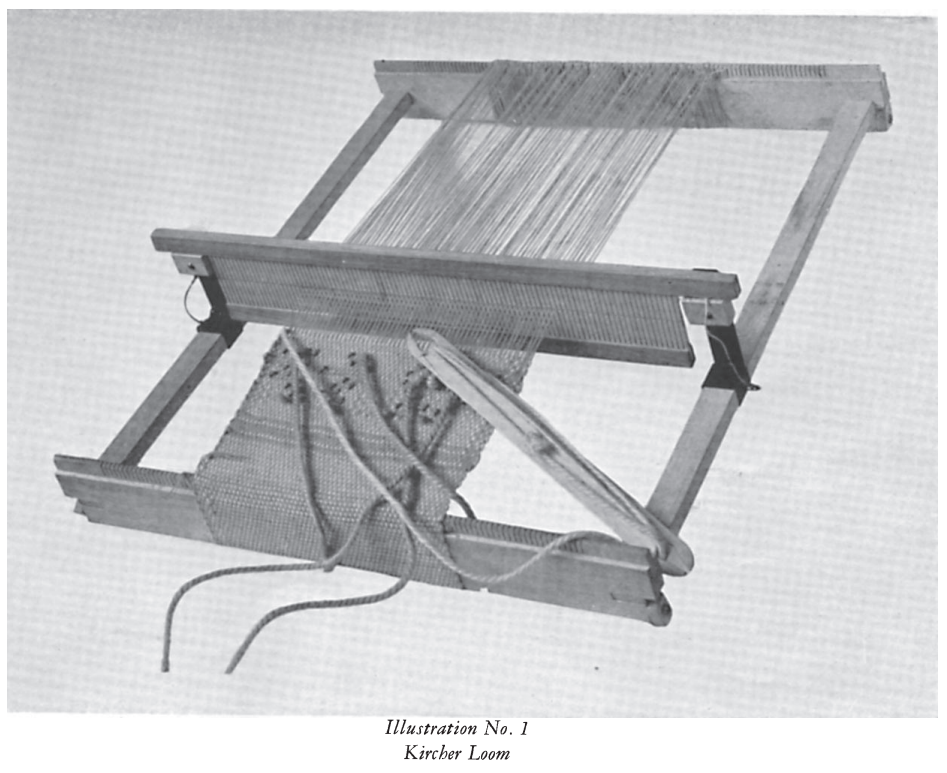
This loom is very clearly a rigid heddle loom (though it might be warped backwards in that photo!). The article is part 2 of a 4 part series, but the archive doesn’t seem to have the issues with the other parts (and the numbering of volumes is very confusing!). The loom is described as coming in 3 sizes, from 14 to 30 inches, and that they can take about 8 warp threads to the inch, and the reed was made of wood.
Kircher is still around and their history (German) says they were founded in 1924 and “within a few years” expanded to include “large weaving frames”, which is how they refer to their rigid heddle looms, which they still sell in the German market. So if the Kircher looms are the first true rigid heddle looms, that puts the origins likely in the late 1920s, as one could expect it takes some time for the loom to make it from Germany to the US and for the article to be written and published. This is a couple decades before the 1953 Spear's example which is the oldest Liz Gipson mentions in a footnote on her post on When if ever do I need a floor loom?
What I’ve learned from that article and from various vintage weaving books from the 50s-70s is that there are various terms used to refer to rigid heddles and rigid heddle looms in older books, which may be why others have concluded they likely developed post WWII with looms like the Spear's looms.
The Joy of Hand Weaving (first edition is from 1950; photos are from the 1964 second edition) includes details of how to make a “Heddle-Frame” also known as a “Slot-and-Hole Heddle”, and how it can be a good choice if you’re making your own loom. The diagrams don’t quite show a full loom set up with supports etc., but the other diagrams in the book are often missing that kind of detail. “Heddle-Frame” also seems to be used in other sources to refer to a shaft or harness, including in patents for power looms.
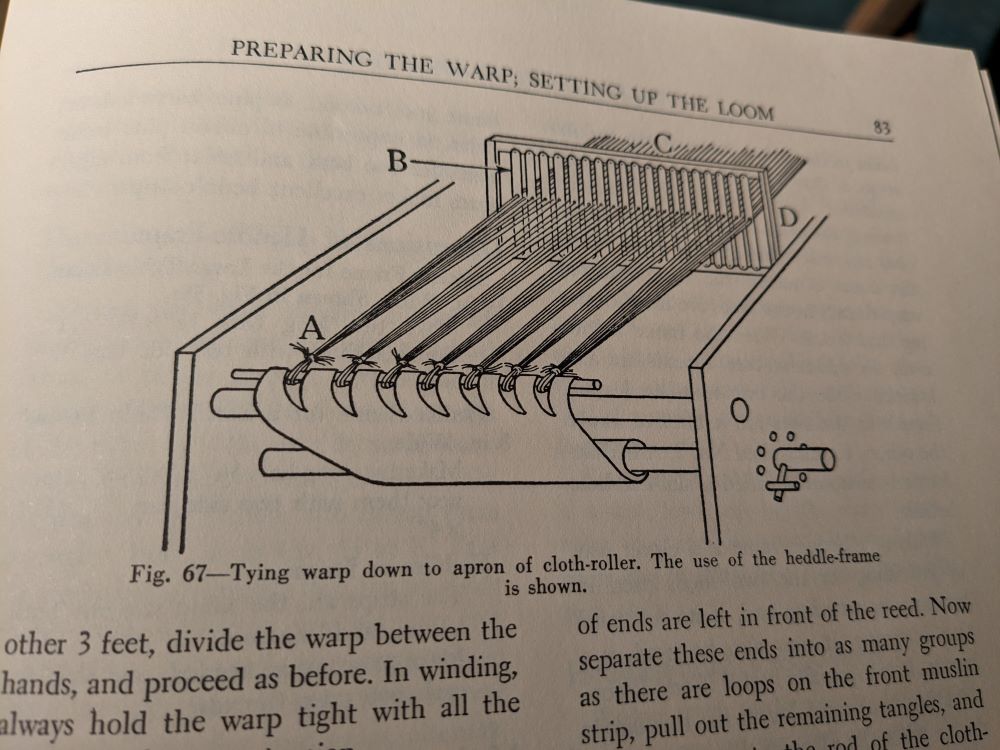
Hand Weaving for Pleasure and Profit: A Guide to Two Harness Weaving, by Harriette J. Brown, from 1952, includes a clear example of a rigid heddle loom as a kind of 2 shaft loom - it refers to it as a “heddle-reed combination”, and refers to "longs and shorts" instead of slots and holes.
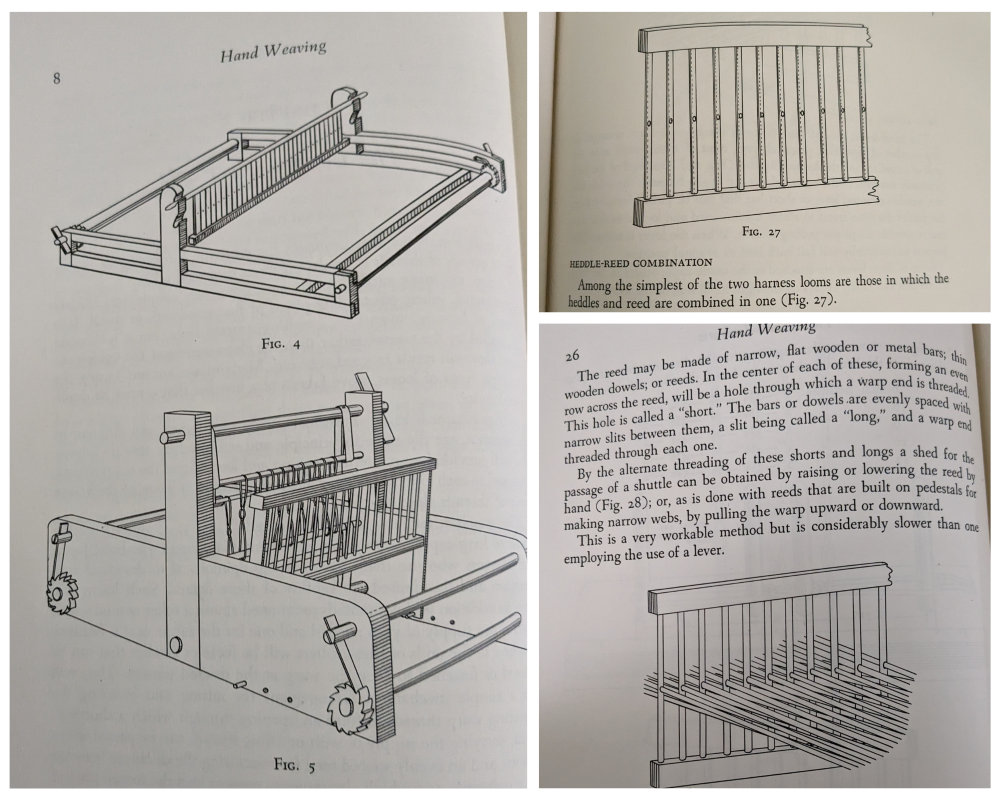
As late as 1978, Nina Holland’s The Weaving Primer: A Complete Guide to Inkle, Backstrap, and Frame Looms groups rigid heddle looms as a kind of frame loom, and refers to several different makers of rigid heddle looms, including Beka and Schacht, and provides plans for a frame loom using string heddles in the same category. It doesn’t use the term rigid heddle loom in the book, but does in the index.
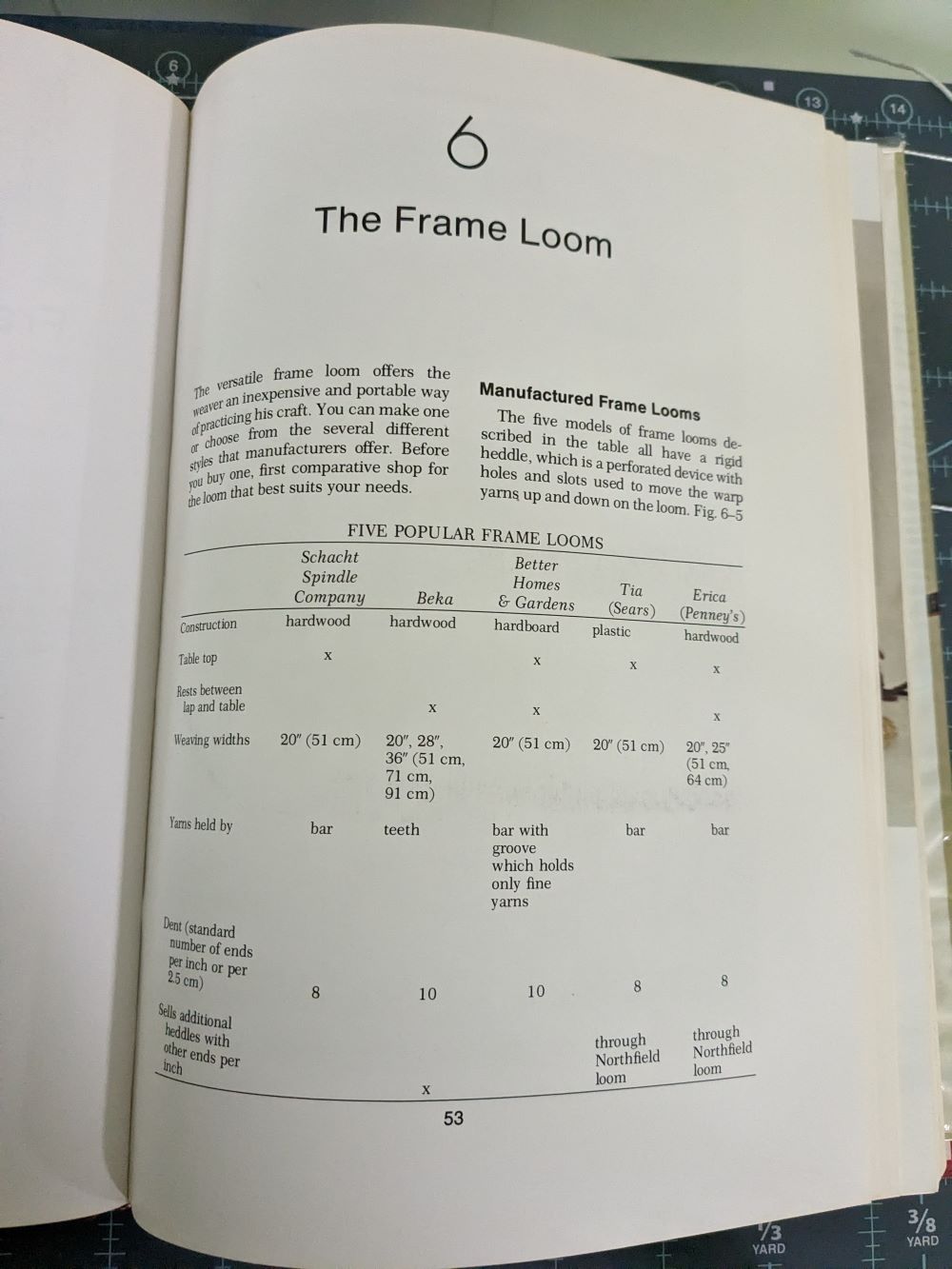
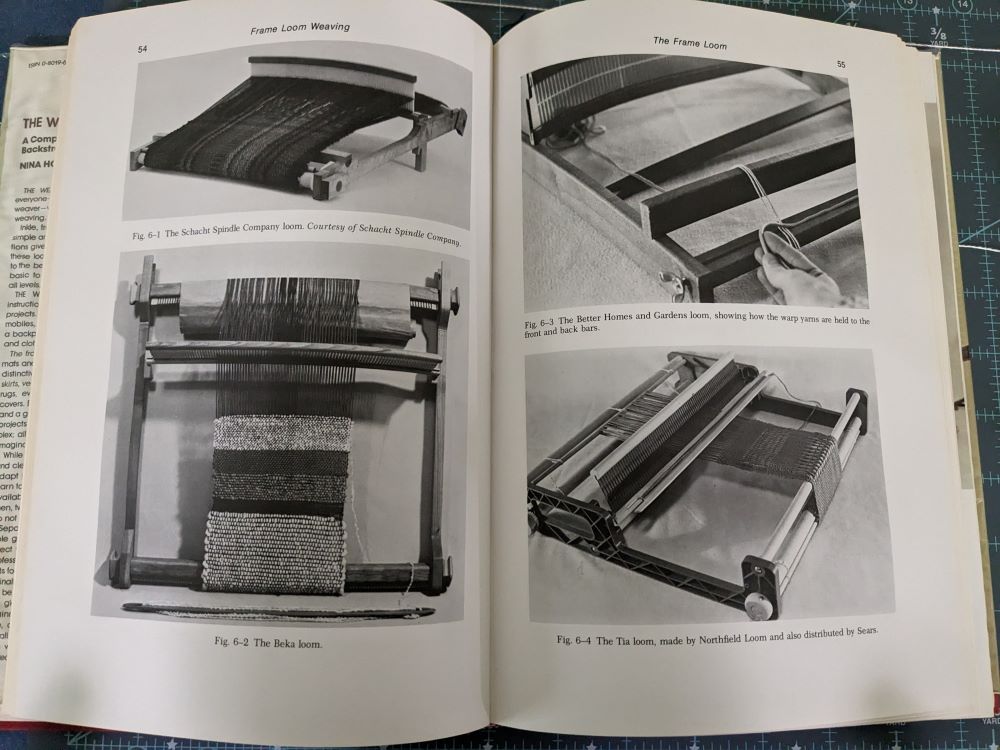
The Google Books Ngram viewer tracks the frequency of short combinations of words in their archive of scanned books, and can give some insight into the popularity of different names for these looms. Some of the terms I found like 'heddle-reed combination' were too rare to show up at all, or, like 'slot-and-hole' were very rare in comparison to others. As we can see, 'weaving frame' and 'frame loom' are much more common in general (they are more generic terms), but weaving frame in particular is much more common until around 1950. The phrase “Rigid Heddle Loom” started to pick up in the 1970s, with a very small number of references to “rigid-heddle loom” in the 1930s, and it doesn’t have any usage of “rigid heddle loom” prior to 1950.
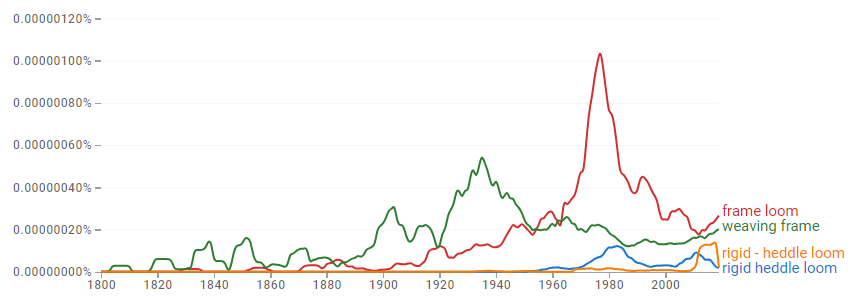
I was surprised at the drop off of Rigid Heddle Loom post ~2010, but then I see a lot of the recent books use the hyphenated version “Rigid-Heddle Loom” which gets counted separately! I hadn’t even noticed that half my books use one and half the other!
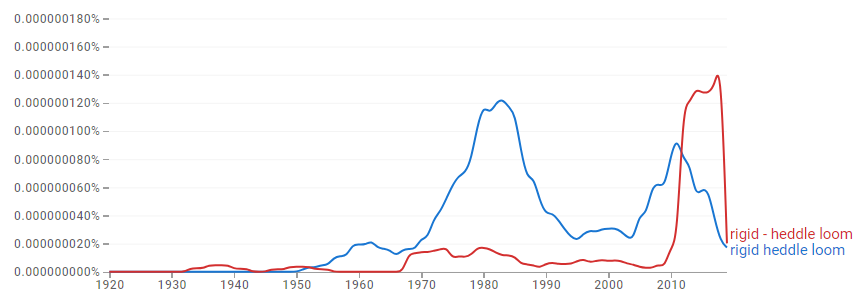
There was a particular wave of interest in the 1970s and 1980s that led to a number of books dedicated to these looms, rather than a chapter in a more general book, and focusing on more complex techniques, like the three heddle books by Xenaxis and McKinney and Betty Linn Davenport’s Textures and Patterns for the Rigid Heddle Loom. David Xenakis’s 1978 book sometimes refers to “rigid-heddle loom” and to “rigid-heddle frame loom”.
Interest in this kind of loom seems to have waned through most of the 90’s, picking up more recently since the mid 2000s with a wave of new and improved loom designs. I haven’t found any Rigid Heddle focused books published between Betty Linn Davenport's 1987 Hands on Rigid Heddle Weaving and The Ashford Book of Rigid Heddle Weaving in 2002, but it’s picked up again since!
Many of the looms currently for sale have been introduced or majorly redesigned since the mid 2000s. For example, Ashford has produced their Rigid Heddle loom for over 70 years as of 2020 (Kelly Casanova has a photo of an early model), but introduced their Knitter's Loom in 2005 and the Sample It in 2013, with a major redesign of the ‘classic’ rigid heddle loom in 2012, and Schacht introduced the Flip and Cricket in the late 2000s, replacing an earlier non folding model dating back to the 60s or 70s; Kromski's Presto line was introduced in 2018 and their Harp turned into the Harp Forte at some point.
More recent loom designs tend to use ratchet and pawl systems instead of wing nuts or even simpler mechanisms for adjusting tension, and use an apron bars (also called warp sticks) instead of a beam with teeth to attach the warp. These modern designs offer an improved weaving experience on these affordable looms!
The books cited here are largely books I came across through chance, though I also did some searching on Google Books to see if I could find any interesting references to these terms. I didn't find anything that was a clear example of a rigid heddle loom older than the Bernat Handicrafter reference to the Kircher, but it can be hard to tell from some of the snippets! And I've only searched English sources.
Check out Not So Rigid Designer, the online weaving software for rigid heddle loom weavers!
